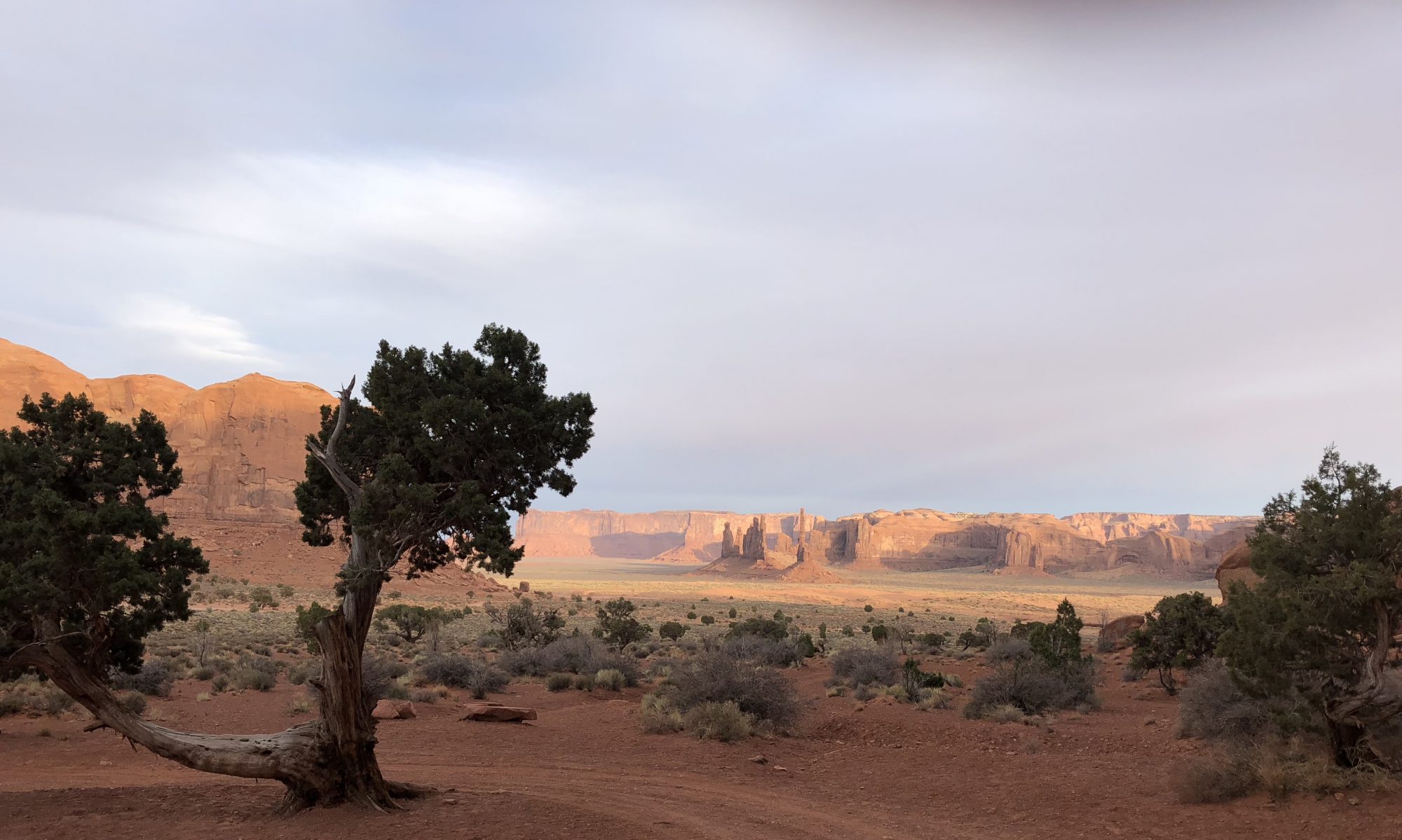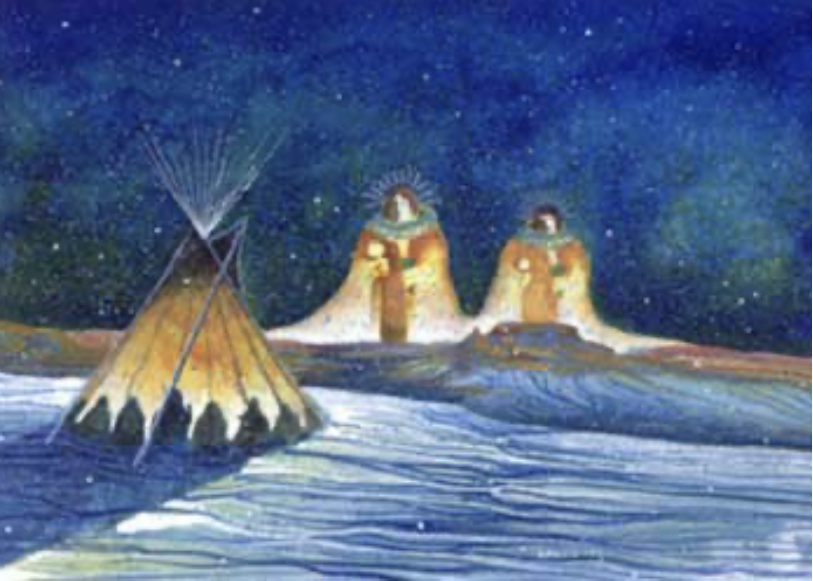
I am looking out at my snow covered yard in suburban upstate New York, remembering an event from over forty years ago that winks from the shadows, coaxing me out of the winter blues. Here it is:
Car Trouble En Route to a Night Chant
I was driving alone in pitch darkness of winter on the Navajo rez when suddenly the undercarriage of my Toyota sedan got hung up on the sand.
I’d been trying to make my way to a Navajo Night Chant ceremony taking place somewhere I now cannot name. I’d been following the sporadically placed signs that pointed the way to the ceremony with growing confidence, until that moment when my car succumbed to the relentless grip of soft earth. (For an eye-opening report on Navajo roadways, see Amy Linn’s piece The Navajo Nation’s horrendous roads keep killing people and holding students hostage, but nothing changes on centerforhealthjounalism.org).
A young woman alone in the desert that night, with a car that wouldn’t budge . . . What could I do? I sat on the cold desert ground certainly feeling vulnerable (though the reservation crime stats then were not as dire as they are now). But at the same time I was hopeful that someone would come along, and that the someone would reinforce my faith in humanity as so many Navajo people had done during my time on the rez.
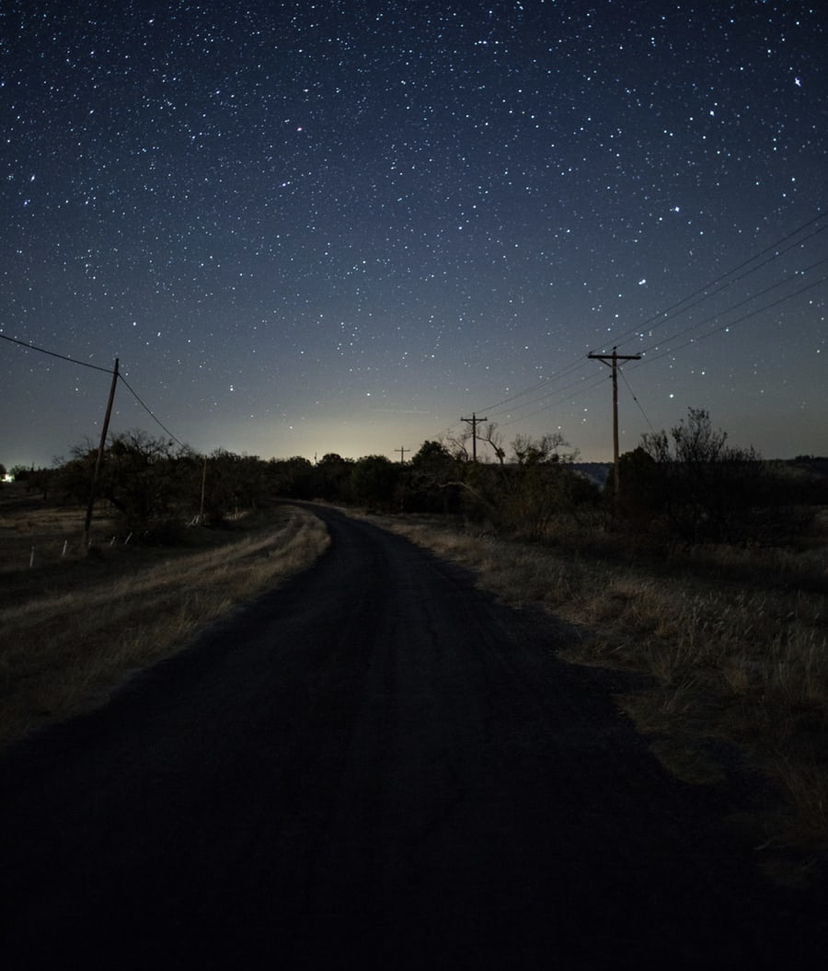
It wasn’t long before I saw headlights in the distance . . . an approaching pickup likely headed to the same ceremony I still yearned to witness. I stood up and waved my arms. The headlights blinked, signaling me to step out of the way. Then the truck slowed to a crawl and pulled right up to touch the rear of my car. The driver motioned with his hands for me to get back behind the wheel. When I turned on the engine and shifted into neutral, the pickup gently pushed me out of the sand trap, freeing me up to continue on my way. I waved a thank you as the pickup passed me, and I followed my rescuer all the way to where the Night Chant was taking place.
I’d hoped to more strongly express my gratitude when we reached what I thought was our mutual destination, but the pickup sped forward and away into the night when we hit the parking area, its passengers having folks to meet, I supposed.
My rescuer and I never exchanged a word.
Grace, Fires and Chanting Warm the Night
With this rescuer who’d emerged from darkness only to suddenly disappear from view, I was beholden to spiritual forces even before I entered the Night Chant circle with a hogan at its zenith, the doings inside of it shrouded in mystery. I stepped into the realm of pinon scented air, warm fires, strong coffee, bubbling stew, and a gracious vibe that emanated from the folks who’d gathered to participate in the winter ceremony.
When the Yei Bi Cheii (Grandfather Gods) dancers emerged into the firelight and began to chant, I was sitting beside a family that had made room for me, again through wordless gesture. Like my gracious hosts, I was bundled up in blankets and, though struggling to stay warm, I was feeling perhaps as peaceful as I’d ever felt in my twenty odd years. At one point, I was lulled to sleep by the smoke and the cold. My hosts awakened me in time to join them in wishing the Grandfather Gods farewell at dawn.
A New Kind of Chanting
Flash forward to my senior self in winter, now yearning for bygone days while living in the land of my snowbelt roots. Like my late mother, I’m an opera fan. When I was a girl, my mom and I used to listen to opera broadcasts when we found ourselves at home together on a winter weekend afternoon. These days, I hit the Met from time to time if a New York City visit coincides with something I want to see, or I’ll sometimes go to a movie theatre to watch a Met broadcast “live in HD”.
So, as a semi opera buff with fondest memories of Navajoland, I was intrigued when I learned that, about ten years ago, a work called Enemy Slayer, billed as a Navajo oratorio, premiered in Phoenix as part of the Phoenix Symphony Orchestra’s 60th anniversary celebration.
The oratorio features a libretto by poet Laura Tohe, who was recently named poet laureate of the Navajo Nation (for more information about Ms. Tohe, see https://www.lauratohe.com/).
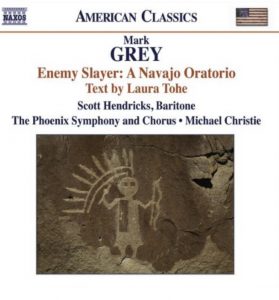
The story of Enemy Slayer concerns a soldier haunted by events of war who is guided into healing by the chanting of ancient Navajo prayer. (Note: The actual Navajo ceremony for returning warriors, the Enemy Way, is a warmer weather event that involves feasting and dancing and other community activity to bring a spiritually wounded warrior back into balance.)
I ordered the oratorio Enemy Slayer once I learned it was obtainable on CD, and I anticipated that in listening, I might be drawn back into that memory of getting unstuck by grace and chanting on a desert night in the middle of winter so long ago.
I was in for a bit of disappointment. I had expected to hear an oratorio in the Navajo language, but Laura Tohe composed the libretto in English, with only a smattering of Navajo sprinkled here and there. The text, filled with Navajo prayer refrains (e.g., “Child of dawn/Child of daylight/Child of evening twilight/Child of darkness”), portrays the trauma and confusion of the universal soldier: “I’m in a world of pain/I’m hard core/I seek and destroy the enemy/This is my war horse/I charge the enemy/I am the hometown hero!/I am a child of war/I am lost . . . “
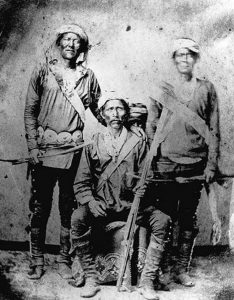
Tohe’s text was translated into Navajo by Jennifer Wheele, but you have to go online to see the translation ( see https://www.naxos.com/sharedfiles/PDF/8.559604_sungtext.pdf# for full libretto in English and Navajo).
Will the oratorio one day be performed in Navajo? I wish it could be so, but who knows? When Enemy Slayer was performed in Phoenix, photographs of Navajoland by Deborah O’Grady were projected for the audience to provide the sense of place as the chorus sang in the concert hall.
Tohe told me that a Navajo woman in the audience remarked that “the performance was like a ceremony, with the conductor as the medicine man, the baritone singer as the patient and the chorus as the extended family singing for the patient.” Tohe had also asked that the women chorus members be seated on one side and the men on the other side of the stage “per seating in the hogan during a ceremony.”
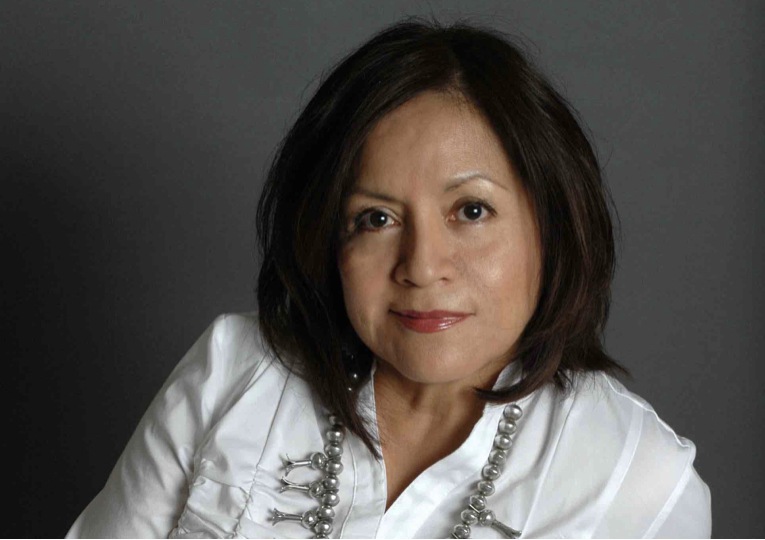
Laura Tohe’s latest project is Nahasdzaan (Mother Earth) in the Glittering World, a cutting edge dance oratorio with music composed by Thierry Pécou, choreography by Luc Petton. The premiere performance (sung in English with French subtitles) last year at Normandy’s Opera de Rouen received overwhelming praise from the international press. The work will be performed in Grenoble, France on April 17 this year (4/17/20 UPDATE: due to COVID-19, the premiere is delayed until 2021. Here’s a glimpse on YouTube: https://www.youtube.com/watch?v=hI8pkLWO7o4).
In an interview on Pécou’s website (Ensemble Variances) Tohe summed up her hope for the work, which presents the Navajo creation story via music and dance, and with live animals performing onstage: “Like any artist,” said Tohe, “my hope is that the audience will appreciate the work as a hybrid that takes a Navajo story and classical music as a way to create a statement about healing.”
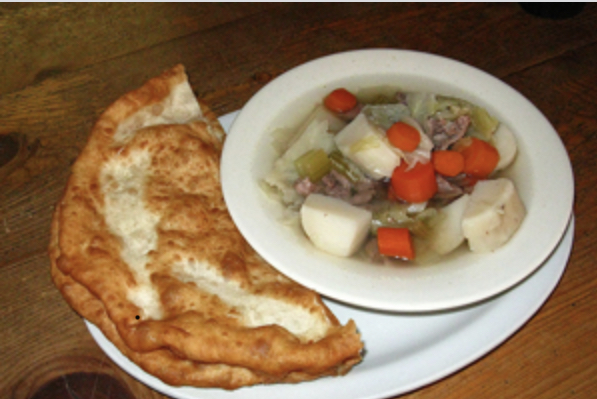
I began this piece by conveying a memory of being physically and spiritually transported on the rez when no words were spoken at all. And I’ve landed here, with this wish regarding the performance of a new Laura Tohe opera: that coffee and stew be served during intermission.
